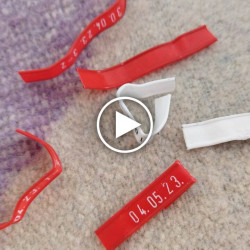Kathmandu, Nepal's liquid landscape: Hiti Pranali water heritage
Research maps network of ancient water canals that still function despite urban pressure
Originally published on Global Voices
Manga Hiti inside the Patan Darbar Complex. Photo: Suman Nepali via Nepali Times. Used with permission.
This article by Sudiksha Tuladhar was originally published in Nepali Times, and an edited version has been republished on Global Voices as part of a content-sharing agreement.
The Kathmandu Valley civilisation can also be called a hydrological culture where sophisticated water management allowed densely-packed settlements to co-exist with intense agriculture on the fertile soil of the former lake-bed.
Both needed plenty of water, but the Valley’s rivers are not snowfed. So, the rulers of the kingdoms sourced them from the surrounding hills in an elaborate network of canals that did not just provide water for irrigation and fill ponds but also ensured urban supply through sunken spouts called hiti.
A hiti in Kathmandu. Photo by Hayley Saul via Nepali Times. Used with permission.
The fact that the hiti system is still a vital source of water for the residents of inner city Kathmandu, Patan or Bhaktapur despite rapid urbanisation is a testament to the engineering and planning expertise of those dating back to the Lichhavi period (400–750 CE) and later during the Malla era (10th–18th century CE).
“The Liquid Landscape of Kathmandu Valley: Hiti Pranali Water Heritage” is a new exhibition at Patan Museum in Kathmandu Valley that pays tribute to this cultural heritage. This exhibit explores recent archaeological research that offers solutions to their preservation and ways to maintain them to supplement modern systems.
Research by Hayley Saul of Heritage for Global Challenges Research Centre and PhD scholar Anoj Khanal at the University of York in the UK entailed using Ground Penetration Radar (GPR) to generate electromagnetic waves to map underground water conduits. Collaborating in the research was engineer and author of the seminal book “Hiti Pranali”, Padma Sunder Joshi of the Madan Bhandari University of Science and Technology.
“We used GPR to explore if we can find filtration systems or functions that allow for the flow and control of water and its distribution”, Saul explained.
Although many of the historical monuments of the Valley that were destroyed in the 2015 earthquake have now been rebuilt, there have been minimal efforts to learn about underground water conduits that may have been damaged and how to repair them.
GPR technology can be used to map the main canals (raj kulo) and their branches and explore how they were designed and built in the first place without having to carry out expensive excavation — which would be difficult anyway because there has been significant development and construction throughout the Valley.
Photo by Hayley Saul and Anoj Khanal via Nepali Times. Used with permission.
Local governments can now use the data collected by the researchers to map out the network canals, maintain them and enforce building restrictions if needed.
Traditionally, the hiti of Kathmandu were not just functional but also sacred social and spiritual hubs. They provided water for drinking, laundry, household use, and rituals while also serving as gathering places for communities.
With the introduction of modern water mains from the late 19th century onwards and rapid urban growth, many hiti have fallen into disrepair or dried up. Of the at least 573 stone spouts once counted in Kathmandu Valley, many are lost, damaged, or no longer functional due to neglect, pollution, and encroachment on the ponds and canals that feed them.
Joshi explains that Kathmandu’s ancient urban planners developed the hiti network on higher ground to leave the lower areas for agriculture. It forced them to devise ways to bring water through a network of canals fed by aquifiers and use the gradient to sunken hiti stone spouts for distribution.
The exhibition at Patan Museum also demonstrates that the hiti system incorporates space for living beings, making it a self-functioning ecosystem in itself. The existence of plants such as ferns and algae, as well as snakes and frogs, indicates a healthy ecosystem in the sunken spouts. The absence of such biodiversity today indicates that the water systems have been degraded or polluted.
“The ponds were used to collect water and recharge groundwater and aquifers”, explains Joshi. “They were primarily used for farming ducks, which needed the algae in the ponds as food.”
Every June, just before the monsoon season, Kathmandu Valley’s Newa community ritually cleans the city's wells and other sources of water to maintain drainage and ensure that they serve as effective storage systems. This is why Kathmandu’s hydrological culture is such an important part of its civilisation to this day.
The underground network of water canals also showed advanced engineering skills, and the system was so well built that it has lasted centuries, even though local communities may have lost the skills needed to build and maintain them.
Anoj Khanal says, “The wisdom from the past must be preserved and used. The technique and knowledge must be adapted to the modern times.” The York University team used the GPR technology at 33 hiti sites in Patan, and now hope to do similar research in Kathmandu.
The hiti system thrived because it worked in balance with nature — a balance which has been disrupted by modern pressures such as the over-extraction of ground water and the disappearance of recharge ponds. Pollution from septic tanks and industrial waste also contaminated many aquifers, while the climate crisis is altering rainfall patterns. Many hiti that once flowed year-round are now dry even during the monsoon season.
The hiti exhibition showcases the intricate heritage of Kathmandu Valley’s water supply network and how modern technology can help restore them. It is also a call to action to preserve the canals, spouts, ponds and the catchment areas on the Valley’s rim.
Khanal says: “It is possible to revive the hiti using the maps of water conduits underground to figure out alternate routes where water can flow. It is better late than never.”










